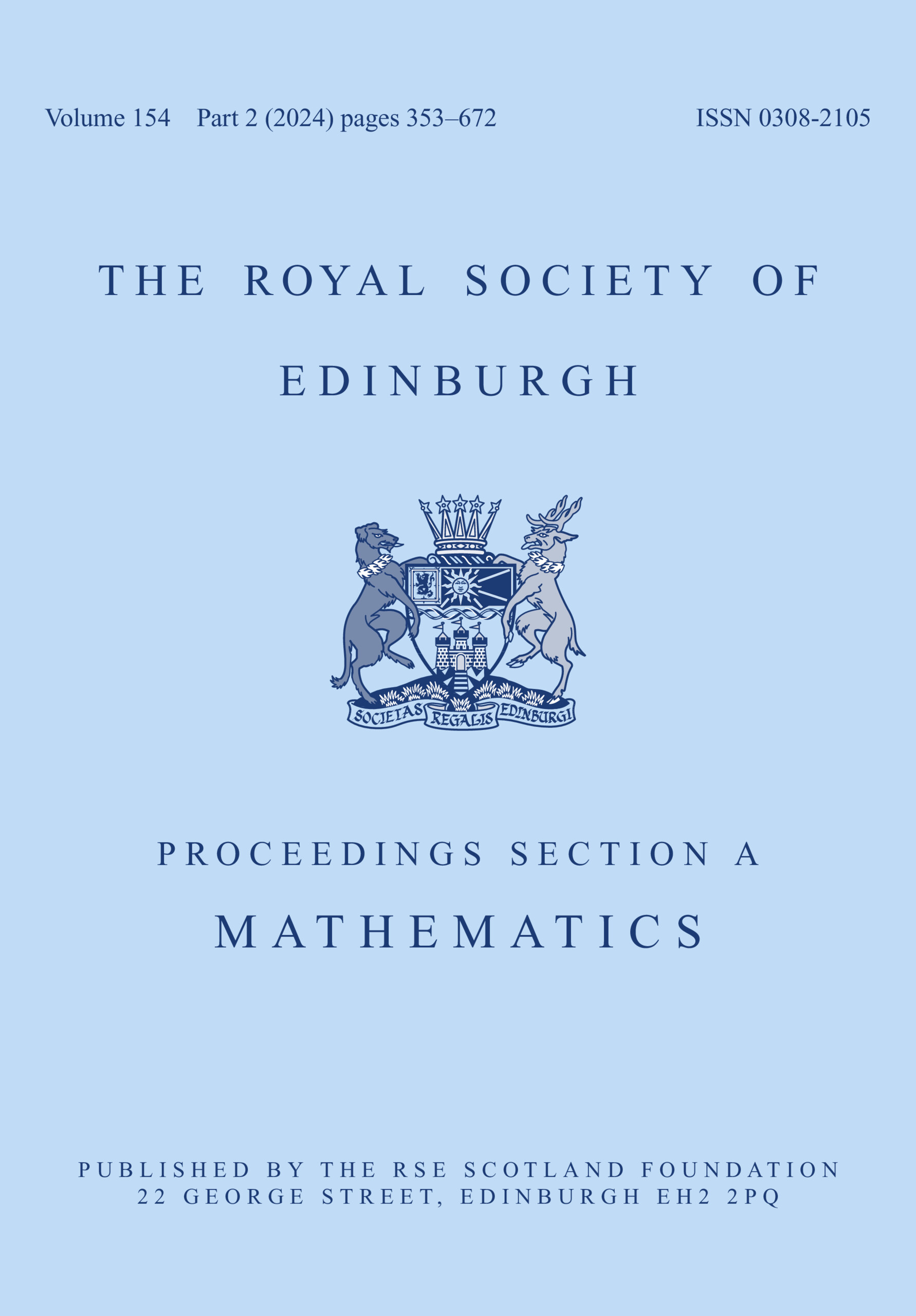Recall that a spanning surface for a link $L$![]() is by assumption a connected unoriented surface with boundary equal to $L$
is by assumption a connected unoriented surface with boundary equal to $L$![]() .
.
Theorem 1.1 and Corollary 4.9 from the paper are incorrect as stated. For example, one can construct counterexamples to Theorem 1.1 using links $L$![]() contained in 3-balls, so-called local links. Let $L \subset B^{3}$
contained in 3-balls, so-called local links. Let $L \subset B^{3}$![]() be a link with an alternating projection on $S^{2} = \partial B^{3}.$
be a link with an alternating projection on $S^{2} = \partial B^{3}.$![]() Under inclusion $B^{3} \subset \Sigma \times I$
Under inclusion $B^{3} \subset \Sigma \times I$![]() , we obtain a local link $L$
, we obtain a local link $L$![]() in $\Sigma \times I$
in $\Sigma \times I$![]() which bounds definite spanning surfaces of opposite sign. However, if the genus $g(\Sigma )>0$
which bounds definite spanning surfaces of opposite sign. However, if the genus $g(\Sigma )>0$![]() , then $L$
, then $L$![]() does not have minimal genus.
does not have minimal genus.
To correct for this issue, we need to add the assumption that $L$![]() is not a local link in the case $g(\Sigma )>0$
is not a local link in the case $g(\Sigma )>0$![]() . The corrected statement of the theorem is as follows.
. The corrected statement of the theorem is as follows.
Theorem 1.1. Let $L$![]() be a link in $\Sigma \times I$
be a link in $\Sigma \times I$![]() , and assume that $L$
, and assume that $L$![]() bounds a positive definite spanning surface and a negative definite spanning surface. Then $L \subset \Sigma \times I$
bounds a positive definite spanning surface and a negative definite spanning surface. Then $L \subset \Sigma \times I$![]() is a non-split alternating link which either has minimal genus or is contained in a 3-ball.
is a non-split alternating link which either has minimal genus or is contained in a 3-ball.
A few remarks on the proof are in order. For $g(\Sigma ) = 0$![]() , the proof is the same as before. For $g(\Sigma ) \geq 1$
, the proof is the same as before. For $g(\Sigma ) \geq 1$![]() , then arguing as before, we see that $P$
, then arguing as before, we see that $P$![]() and $N$
and $N$![]() are not $S^{*}$
are not $S^{*}$![]() -equivalent, unless the core surface $S$
-equivalent, unless the core surface $S$![]() of $\nu (P \cup N)$
of $\nu (P \cup N)$![]() is a 2-sphere. In the latter case, $L$
is a 2-sphere. In the latter case, $L$![]() is contained in a 3-ball, since $\Sigma \times I$
is contained in a 3-ball, since $\Sigma \times I$![]() is irreducible, and $L$
is irreducible, and $L$![]() has a connected alternating diagram on $S,$
has a connected alternating diagram on $S,$![]() implying that $L$
implying that $L$![]() is non-split and has an alternating diagram on $\Sigma$
is non-split and has an alternating diagram on $\Sigma$![]() .
.
Otherwise, assuming that $P$![]() and $N$
and $N$![]() are not $S^{*}$
are not $S^{*}$![]() -equivalent, then the argument goes through as before.
-equivalent, then the argument goes through as before.
Below is a corrected statement of the corollary.
Corollary 4.9. A link $L \subset \Sigma \times I$![]() in a thickened surface of positive genus is alternating and has minimal genus if and only if $L$
in a thickened surface of positive genus is alternating and has minimal genus if and only if $L$![]() bounds definite spanning surfaces of opposite sign and is not contained in a 3-ball.
bounds definite spanning surfaces of opposite sign and is not contained in a 3-ball.
Acknowledgements
We would like to thank the referee for bringing these issues to our attention.


